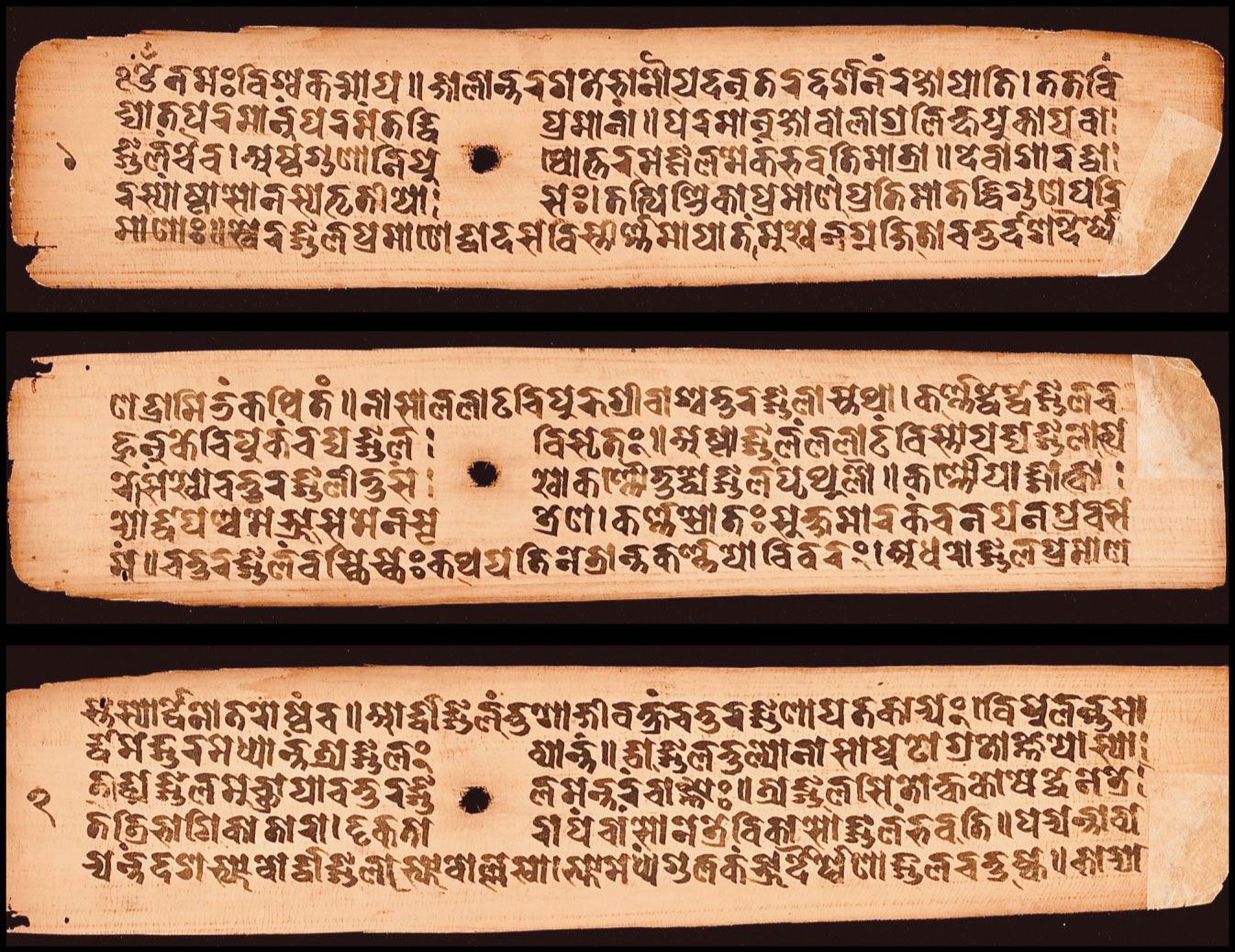A non-Western take on introductory physics
DOI: 10.1063/PT.3.4904
For most students today, classical mechanics is a stepping-stone on the road to more advanced topics in modern physics or applications in engineering. For that reason, the field may seem unappealing to them. P. C. Deshmukh aims to change that with Foundations of Classical Mechanics, a textbook aimed at first-year physics and engineering students. Passionate about the subject, he aims to inspire interest in the field by extracting teachable moments from the exciting discoveries that shaped its history.

Active in the sixth century, the ancient Indian polymath Varāhamihira wrote extensively on topics in astronomy and mathematics. His magnum opus was the encyclopedic text Bṛhatsaṃhitā (The Great Compendium); this palm-leaf manuscript of that text, held by the Cambridge University Library, dates from 1279 CE.
SARAH WELCH/CC BY-SA 4.0

To that end, Deshmukh takes every opportunity to connect important lessons from classical mechanics with modern developments in physics. For instance, in a section on symmetry and conservation laws in the first chapter, Deshmukh quotes Albert Einstein’s obituary for Emmy Noether and nods to Eugene Wigner’s tremendously influential work that made group theory an indispensable part of modern particle physics. Young readers cannot help but be inspired to dig deeply into the foundations of classical mechanics and build a solid base for their careers in physics.

Uniquely, the historical notes have a decidedly Indian perspective. As someone educated in Canada, I was intrigued to learn, among other things, that our modern number system was developed in India; that Varāhamihira studied an earlier version of Pascal’s triangle in India in the sixth century; and that the 14th- to 16th-century Kerala school of astronomy and mathematics developed a heliocentric model of the solar system well before the Copernican revolution. It’s refreshing and at times a bit shocking to get a glimpse at the history of science from a perspective with less European bias.
As befitting a textbook on classical mechanics, Foundations of Classical Mechanics contains chapters on standard material like oscillators, gravity, angular momentum and rotations, and chaos. But the book also includes material on related fields, including two chapters on mathematics and one chapter each on fluid mechanics, electrodynamics, special relativity, and general relativity.
One of the chapters on mathematics is chapter 2, titled “Mathematical Preliminaries.” It would have been easy for Deshmukh to bite off more than he could chew in such a chapter, but he wisely chose to limit the scope to coordinate systems and vectors. The latter is taught first from the perspective of Cartesian tensors before more general tensors are introduced. The section’s clarity facilitates students’ comprehension of later material in the book. It also provides a solid foundation for the presentation of tensor calculus in advanced general relativity textbooks like A First Course in General Relativity (2nd ed., 2009) by Bernard F. Schutz or General Relativity: An Introduction for Physicists (2006) by M. P. Hobson, G. P. Efstathiou, and A. N. Lasenby.
Special relativity is presented in chapter 13 with 4-vectors, which greatly facilitates the introduction of general relativity in chapter 14. Unfortunately one section of the latter chapter is potentially ambiguous: During a discussion of spacetime intervals, Deshmukh presents readers with a mathematical expression that describes a curved spacetime continuum that is spherically symmetrical. But his wording could leave readers with the impression that the expression is valid for all geometries and not just for that particular case. Still, Deshmukh’s presentation of the Lagrangian formulation of Newtonian gravity provides students with a natural and smooth transition to general relativity.
Regarding stylistic matters, I was a bit disappointed to find places with nonstandard or dated language like “man’s view of the universe.” Fortunately those instances are rare.
Physicists have published tons of textbooks on classical mechanics. Two standard works often assigned at universities are Herbert Goldstein’s Classical Mechanics (3rd ed., 2002) and Tom W. B. Kibble and Frank H. Berkshire’s Classical Mechanics (5th ed., 2004). Goldstein’s book is a wonderful resource for advanced physics undergraduates but assigning it to first-year students would throw them into the deep end. The arguments in Kibble and Berkshire’s textbook are impressively elegant and rigorous, although I did catch an error in one of the worked examples when I looked at the book recently. Both established books have their strengths, and Foundations of Classical Mechanics stands proudly next to those classics.
In his new book, Deshmukh provides a rigorous yet accessible introduction to classical mechanics that is suitable for first- or second-year physics and engineering students. Foundations of Classical Mechanics successfully uses a less Western-centric historical perspective to place the field in the context of exciting topics in modern physics.
More about the Authors
Robert B. Scott teaches mathematical physics, cosmology, and astrophysics at the University of Western Brittany in Brest, France. His research focuses on fluid mechanics, Earth’s climate, and general relativity.
Robert B. Scott. University of Western Brittany, Brest, France.




